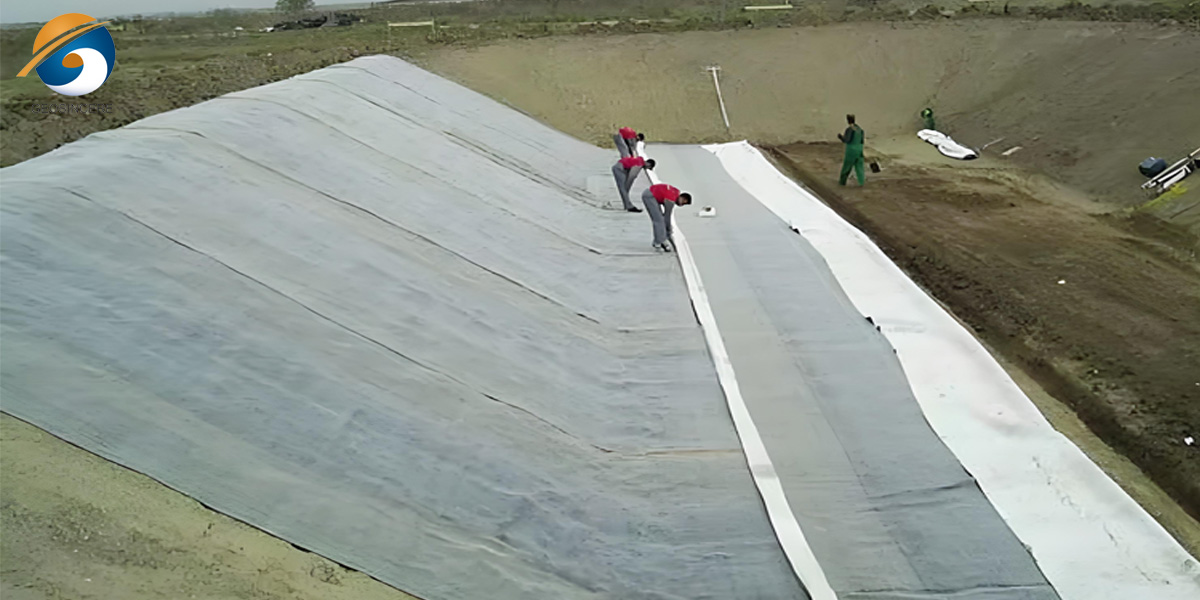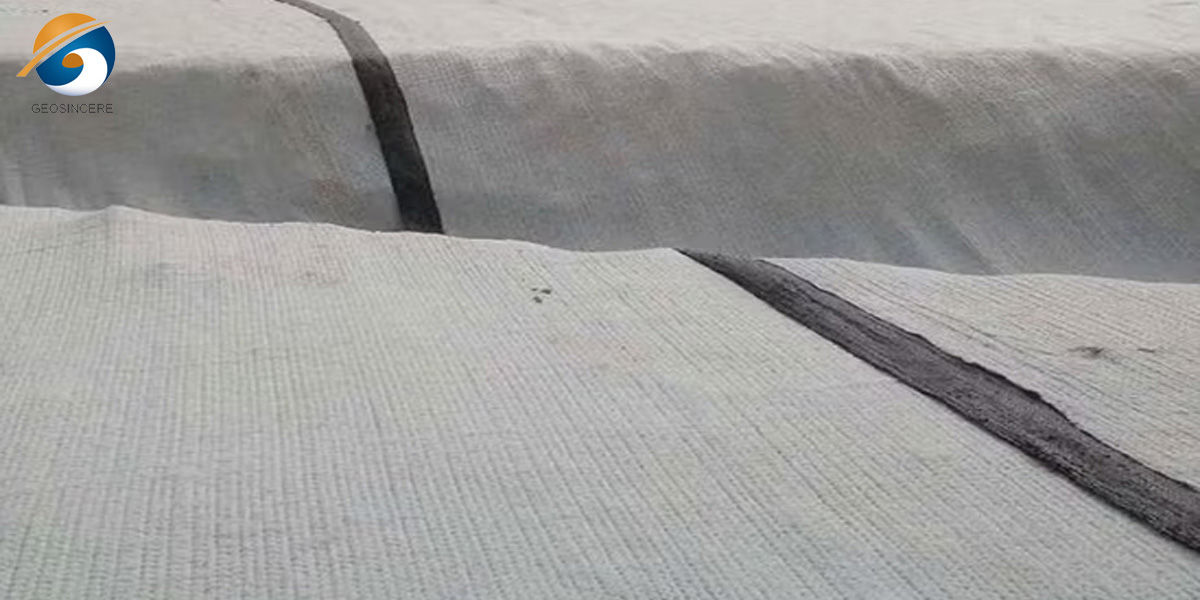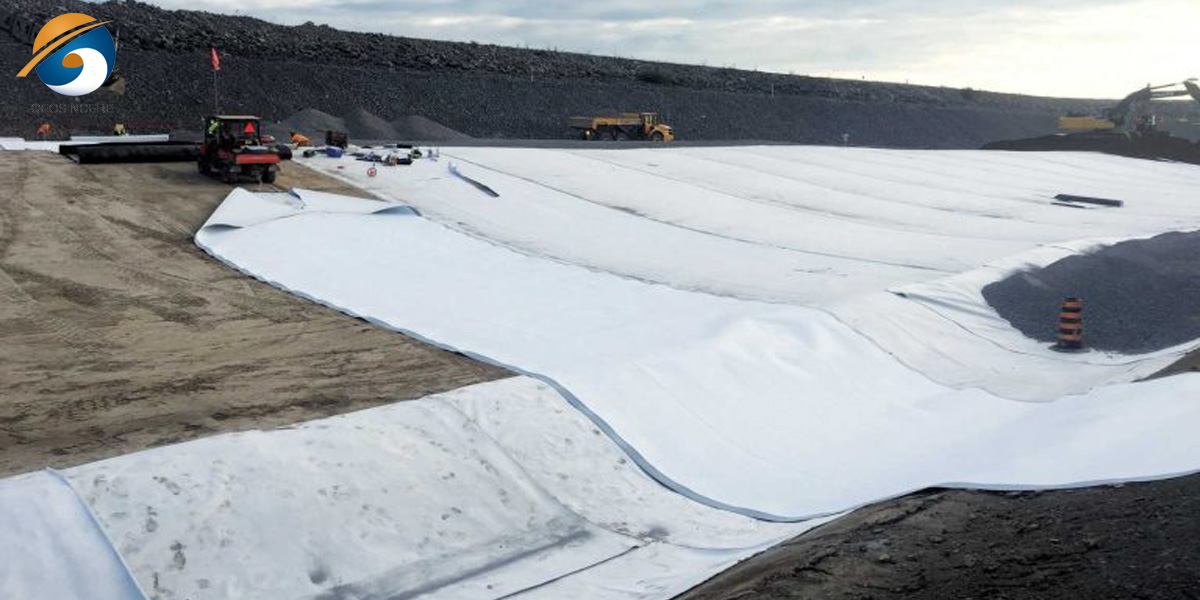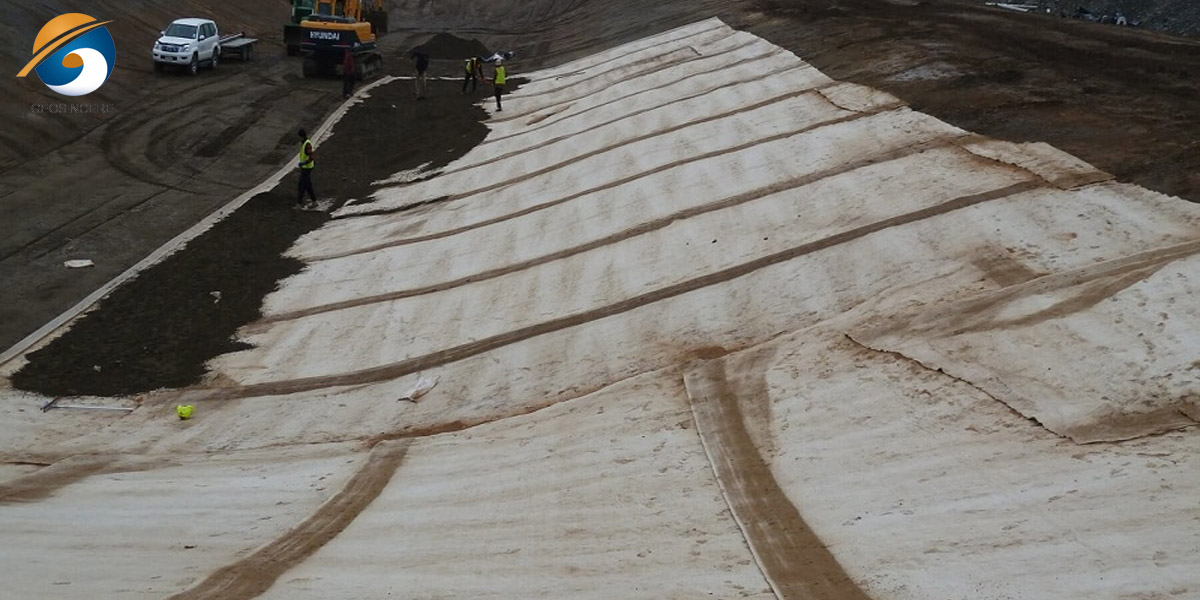Guide to Choosing Bentonite Geocomposite
If you're involved in civil engineering, environmental protection, or construction, you've likely encountered the challenge of controlling water and containing contaminants. For decades, the go-to solution was compacted clay liners (CCL). While effective, they are labor-intensive, time-consuming, and highly dependent on the quality of locally available clay.
Enter a more advanced, efficient, and reliable solution: the Bentonite Geocomposite, more formally known as a Geosynthetic Clay Liner (GCL). This guide will serve as your comprehensive resource on GCL. We will dive deep into what they are, how they work, their different types, vast applications, and why they have become a cornerstone of modern geotechnical and environmental engineering.
1. Understanding the Basics: What Exactly is a Bentonite Geocomposite?
At its core, a Bentonite Geocomposite is a manufactured hydraulic barrier. It is a geosynthetic material, meaning it is a synthetic product used to solve civil engineering problems related to soil. The "clay liner" part of its name comes from its active ingredient: sodium bentonite clay.
A simple analogy is to think of a GCL as a "clay sandwich." It consists of a central core of granular or powdered sodium bentonite clay, which is then enclosed within or attached to geotextiles or a geomembrane. This combination creates a thin, roll-out blanket that is incredibly effective at self-sealing and preventing fluid migration.
2. The Star Player: Why Sodium Bentonite Geocomposite ?
The entire functionality of a geosynthetic clay liner hinges on the unique properties of sodium bentonite. This clay is a natural mineral, formed from volcanic ash, and it possesses a remarkable characteristic: high swelling capacity
When sodium bentonite comes into contact with water, it can absorb several times its own weight and swell to between 10 and 15 times its original volume. This swelling process forms a dense, impermeable gel-like mass. In the context of a GCL liner, this gel effectively blocks pore spaces, creating a continuous, low-permeability barrier that prevents the passage of water and many harmful chemicals.
2.1 Deconstructing a Bentonite Geocomposite: The Components and Manufacturing
To fully appreciate how a geocomposite clay liner works, it's essential to understand its layered structure. While there are different types (which we'll cover next), a standard bentonite clay liner typically consists of the following components:
2.1.1 Carrier Geotextile
This is the bottom layer of the "sandwich." It is typically a non-woven geotextile, which is a felt-like fabric. Its primary functions are to:
Provide a stable, rolled product for easy shipping and handling.
Protect the bentonite core during installation from being punctured by the subgrade.
Allow water to pass through it from below to hydrate the bentonite.
2.1.2 Bentonite Core
This is the heart of the geocomposite clay liner. A controlled, uniform layer of sodium bentonite clay is spread evenly over the carrier geotextile. The quality, purity, and consistency of this bentonite layer are critical to the product's performance.
2.1.3 Cover Geotextile
This is the top layer. It can be a non-woven, a woven geotextile, or a scrim-reinforced non-woven. Its functions include:
Containing the bentonite during installation and throughout its service life.
Providing a protective layer against mechanical damage during and after installation.
Facilitating hydration by allowing water to pass through.
2.1.4 Reinforcement Method
Simply stacking these layers isn't enough. They must be integrally bonded to withstand installation stresses and potential internal shear forces. The most common reinforcement methods are:
- Needle-Punching:This is the most prevalent method. Barbed needles punch thousands of fibers from the cover geotextile down through the bentonite layer and into the carrier geotextile, mechanically locking the layers together. This creates a strong, coherent composite mat.
- Stitch--Bonding:Strong yarns are stitched through all the layers, similar to a sewing machine, to bind them together.
- Adhesive Bonding: A glue or adhesive is used to bind the bentonite to the geotextiles. This is less common than mechanical methods.
3. Types of Bentonite Geocomposite
While the basic concept is the same, GCL clay liner come in different configurations to suit specific project needs:
3.1 Standard Bentonite Geocomposite
These use untreated sodium bentonite and are suitable for containing fresh water and many types of leachate.
3.2 Enhanced (or Polymer-Modified) Bentonite Geocomposite
In these products, the sodium bentonite is treated with polymers. This enhancement significantly improves the GCL's performance in aggressive environments, such as those with high concentrations of salts, heavy metals, or chemicals (e.g., landfill leachate, industrial brine). Polymer-modified geo clay liner exhibit better swell performance and lower hydraulic conductivity in these challenging fluids.
4. The Multitude of Applications: Where is Bentonite Geocomposite Used?
The versatility of Bentonite Geocomposites has led to their widespread adoption across numerous industries. Key applications include:
4.1 Landfill Liners and Caps
This is one of the primary applications. Clay liner is used as part of composite liner systems (often in combination with a geomembrane) in the base and sides of municipal solid waste (MSW) landfills. They are also used in the final cap system to prevent rainwater infiltration, thereby reducing leachate generation.
4.2 Containment and Pond Liner
GCL pond liner is ideal for lining evaporation ponds, firewater retention ponds, agricultural lagoons, and decorative lakes. They provide a robust and self-healing barrier.
4.3 Tunnel and Underground Waterproofing
In tunnel construction, bentonite geosynthetic clay liner is used behind segmental linings or as a primary waterproofing layer to prevent groundwater from entering the structure.
4.4 Secondary Containment
They are installed beneath fuel storage tanks and in chemical processing areas to contain any potential spills, protecting the underlying soil and groundwater.
4.5 Civil Infrastructure
GCL geosynthetic clay liners are used beneath roads and railways to control moisture content in the subgrade, improving stability and preventing frost heave.
5. GCL vs. Compacted Clay Liners (CCLs): A Clear Advantage
The shift from CCLs to GCLs is driven by several compelling advantages:
Feature | Geosynthetic Clay Liner (GCL) | Compacted Clay Liner (CCL) |
Thickness | Very thin (~1/2 inch or 12 mm) | Very thick (2-3 feet or 0.6-1 m) |
Installation | Fast, roll-out process; weather-resistant | Slow, labor-intensive; sensitive to weather |
Material | Factory-controlled, consistent quality | Dependent on local clay source and quality |
Permeability | Very low and consistent (typically ≤ 5x10⁻¹¹ m/s) | Can be variable based on construction quality |
Self-Healing | Excellent; can seal small punctures | Poor; cracks can form and compromise integrity |
Space Saving | Saves significant airspace in landfills | Consumes a large volume of airspace |
6. Critical Considerations for Design and Installation
While GCLs are highly effective, their performance is not automatic. It depends on proper design and meticulous installation.
6.1 Hydration
A GCL requires hydration to swell and become an effective barrier. The design must consider the source and timing of hydration. Premature hydration from rainfall before being covered can be detrimental. Conversely, in arid environments, the designer must specify how the GCL will be hydrated (e.g., by the contained liquid or by pre-wetting).
6.2 Subgrade Preparation
The subgrade must be smooth, firm, and free of sharp rocks, debris, and standing water. Any protrusions can cause stress points or puncture the clay liner landfill.
6.3 Seaming
Rolls of GCL are laid side-by-side, and the seams between them are critical. The most common method is a simple bentonite overlap, where a specified amount of bentonite from one roll overlaps the adjacent roll. Upon hydration, this seam swells and self-seals. The overlap distance and the condition of the bentonite at the seam are vital for a continuous barrier.
6.4 Coverage
Geosynthetic liner is not designed to be left exposed for long periods. They must be protected from UV degradation, mechanical damage, and uncontrolled hydration. They are typically covered with a protective soil layer or the overlying geomembrane promptly after installation.
Conclusion
The Bentonite Geocomposite, or GCL, represents a paradigm shift in containment technology. By encapsulating the natural swelling power of sodium bentonite within engineered geosynthetics, it delivers performance characteristics that fundamentally surpass traditional methods. Its minimal thickness, rapid deployment, and intrinsic self-sealing capability address the core limitations of compacted clay liners, offering engineers a predictable and reliable hydraulic barrier.
The true value of GCLs extends beyond initial installation efficiency. Their resilience against desiccation-induced cracking in variable climates, coupled with the development of polymer-enhanced varieties for challenging chemical environments, ensures long-term integrity in critical applications. From safeguarding groundwater beneath landfills to ensuring tunnel stability in urban infrastructure, GCLs provide a robust first line of defense. As sustainability becomes paramount, the material efficiency and reduced environmental footprint of this technology further cement its role. The ongoing evolution of GCL formulations and installation methodologies promises to unlock even broader applications, solidifying their status as an indispensable component of resilient and responsible engineering for decades to come.For any project requiring a reliable, efficient, and cost-effective containment solution, the Geosynthetic Clay Liner is no longer just an alternative—it is very often the superior choice.
For any project requiring a reliable, efficient, and cost-effective containment solution, the Geosynthetic Clay Liner is no longer just an alternative—it is very often the superior choice. Choose Shandong Geosino New Material Co., Ltd (GEOSINCERE Geosynthetics) for trusted quality, innovative solutions, and expert support on every project.








